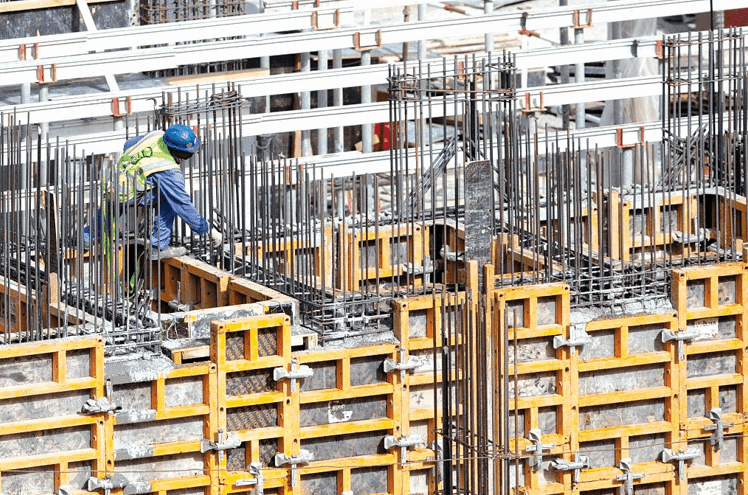Dampened activity in Kenya’s construction industry led to a contraction of 2.9 per cent in the second quarter of 2024, despite growing demand for housing.
This slowdown was reflected in reduced consumption of essential materials like cement and bitumen.
According to the Kenya National Bureau of Statistics (KNBS), the sector had shown 2.7 per cent growth during the same period in 2023.
“For instance, during the second quarter of 2024, cement consumption declined by 7.8 per cent to stand at 2,053.9 thousand metric tonnes from 2,227.6 thousand metric tonnes in the corresponding period of 2023,” KNBS said.
The decline in cement usage is a key indicator of reduced construction activity, sparking concerns about the sector’s health and its impact on Kenya’s broader economy. The construction industry has been seen as an enabler of Kenya’s economic growth, and its slowdown may indicate broader economic challenges.
Kenya’s housing deficit remains significant, with the World Bank estimating that 250,000 housing units need to be built annually to address the shortage. The deficit is exacerbated by an urbanisation rate of 4.4 per cent, equivalent to 500,000 new city dwellers each year, further straining the supply of housing.
In the first quarter of 2024, cement consumption also saw a sharp drop, with sales falling by 12.7 per cent, from 2,234,200 metric tonnes in 2023 to 1,949,900 metric tonnes.
This decline has contributed to the sector’s shrinking gross domestic product (GDP), which dropped from Sh146.9 billion in the first quarter of 2024 to Sh139.2 billion in the second quarter.
Bitumen imports
Bitumen imports, crucial for road construction, fell by 8.1 per cent, with the country importing 15,566.2 metric tonnes in 2024 compared to 16,936.3 tonnes in 2023.
“Iron and steel imports decreased by 9.1 per cent in the quarter under review to stand at 222,115.8 metric tonnes compared to 244,250.3 metric tonnes imported in a similar quarter of 2023,” KNBS noted.
The slowdown wasn’t limited to construction. The transportation and storage sector also experienced slower growth, with a deceleration to 3.6 per cent from 4.6 per cent in 2023.
The consumption of light diesel, which fuels passenger and freight road transport, dropped by 5.1 per cent. The Standard Gauge Railway (SGR) passenger numbers fell by 8.5 per cent, from 652,300 passengers in 2023 to 597,100 in 2024, partly due to fare increases introduced in January 2024. Despite the drop in passenger numbers, revenue from passenger rail transport rose by 36.8 per cent, reaching Sh971.6 million in the second quarter of 2024, up from Sh710.4 million in 2023.
Cargo transported via the SGR grew by 8.7 per cent, increasing from 1,604,200 tonnes in 2023 to 1,743,300 tonnes in 2024, signalling resilience in the freight transport sector.
Air transport growth, however, according to the report was hampered by a decline in domestic passenger traffic, which fell slightly to 1,224,900 passengers in the second quarter of 2024, compared to 1,236,700 passengers in the same period of the previous year.
During the quarter, the number of international passenger numbers increased by 7.1 per cent, reaching 2,941,900.

















